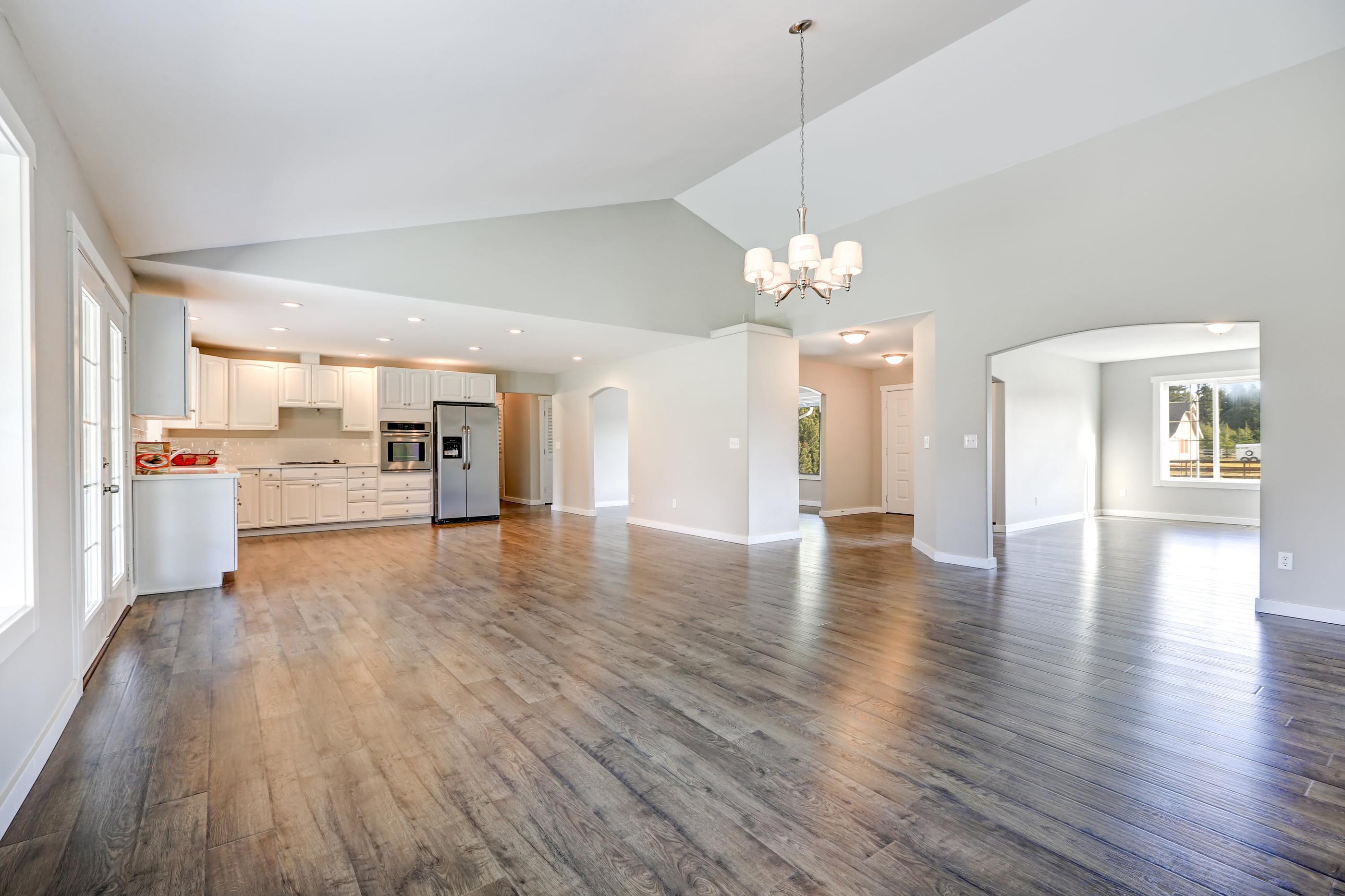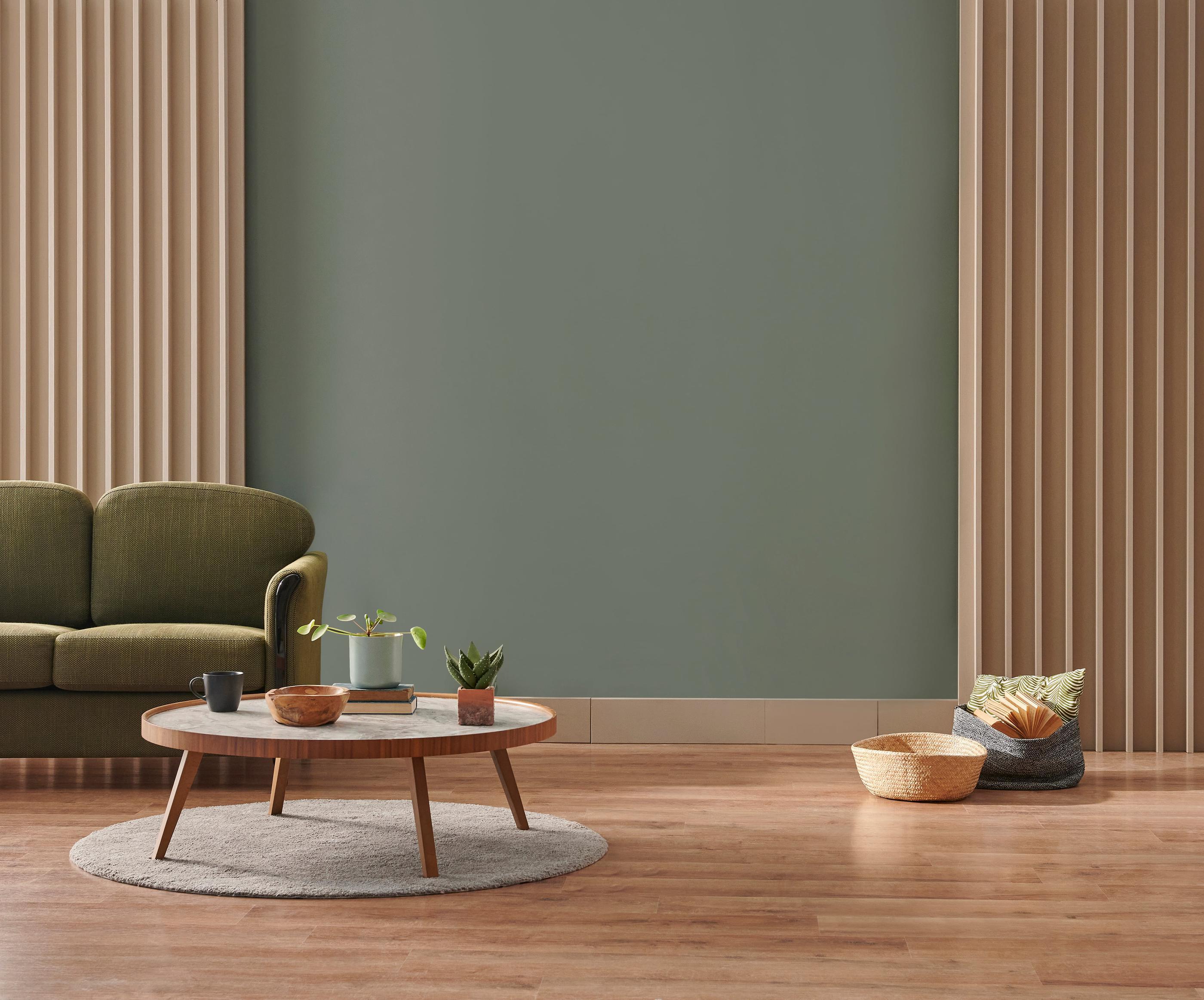High-traffic areas, high-ROI remodels, and stunning results all demand one material: vinyl flooring. This may not have been true decades ago, but technology has drastically enhanced what vinyl has to offer today.
On the surface, it’s the appearance that gives it an edge. Any color, texture, or pattern you want is out there. But in truth, its durability has made it a worthy choice. Today, we’re providing a brief overview of vinyl floor maintenance. Find out how the highest-quality options like LVP can stay looking just like new for years to come.
What are the benefits of choosing vinyl flooring like LVP?
Thousands are remodeling and adding flooring like luxury vinyl plank (LVP) and luxury vinyl tile (LVT) for these benefits:
-
Greater design flexibility, with a massive range of patterns and colors.
-
Increased resistance to moisture and bacteria than other flooring options.
-
Friendlier to pets and kids than hardwood, which can permanently scratch more easily.
-
High-quality vinyl flooring is more affordable than most hardwoods, easier to care for, and easier to customize and install.
That’s not all, either. Learn more great benefits of choosing LVP.
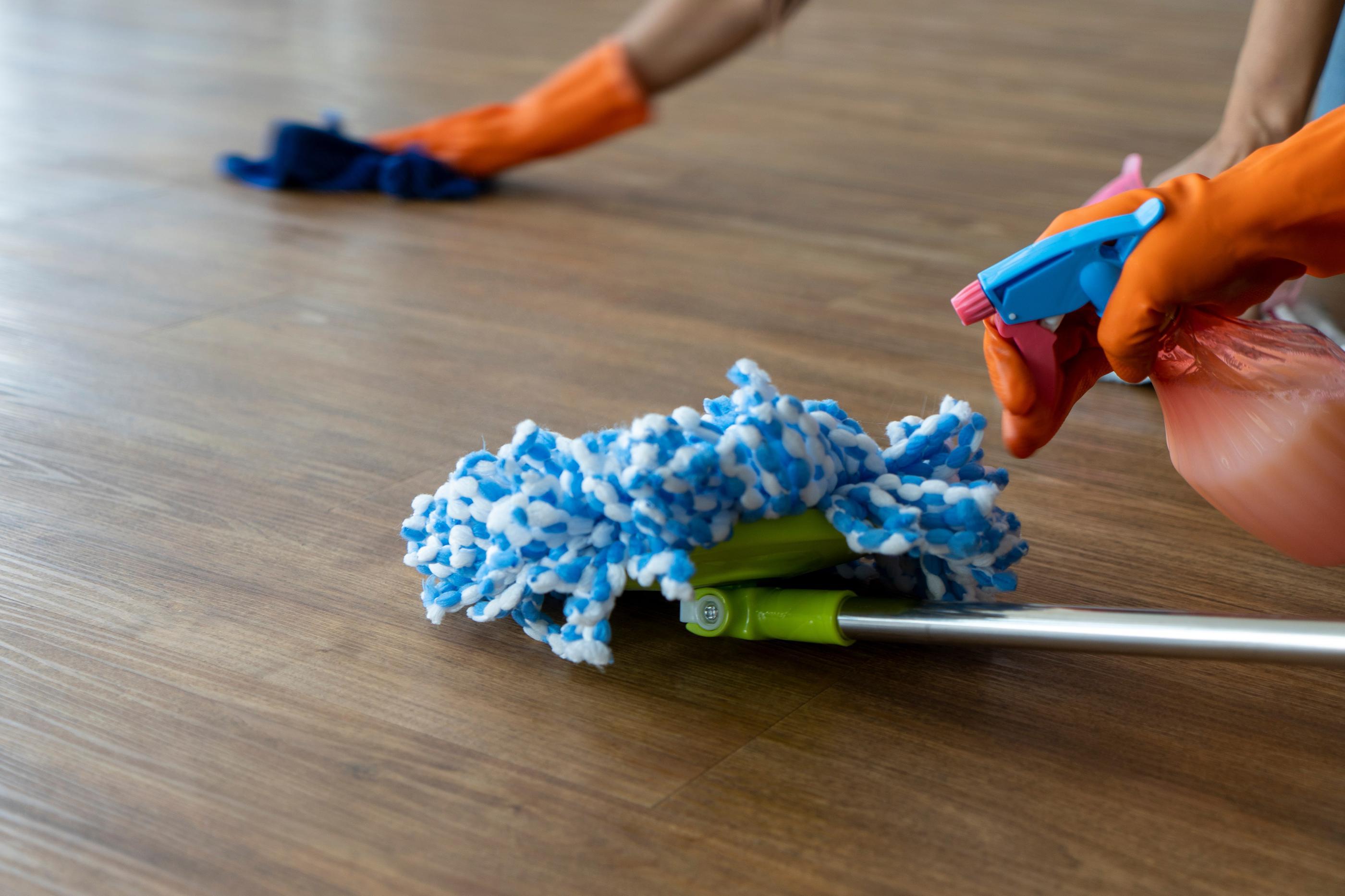
Vinyl floor maintenance: Tips and methods for beauty and longevity
If vinyl is so low maintenance, what’s with all the rules? The following tips are just a beginner’s primer to maxing out the lifespan of a new floor. Preserving the layers that make up each piece can change the way you think about vinyl flooring forever.
Review the manufacturer’s instructions and warranty.
The manufacturer will usually recommend certain cleansers. They may also explain what type of damage isn’t under warranty, such as from improperly moving furniture or applying certain finishes of your own to the floor.
Mild, diluted detergents or vinyl-specific cleansers are the most common cleaning recommendations. Rubber-backed mats or proximity to dusty heating ducts may discolor vinyl flooring over time. All of these risks vary by product, so it’s extra important to read up on what the manufacturer has to say. You only have to do so once!
Use soft brooms and mops.
Softer bristles on brooms and mop heads made of materials like microfiber are best for preserving vinyl flooring surfaces. Stiffer, more abrasive ones can dull the surface over time, collecting tiny scratches barely perceptible to the eye–until there are thousands of them.
If there’s a caked-on mess or stain, use a soft nylon brush and slightly stronger cleanser concentration to dislodge it. A butter knife can gently scrape up things like chewing gum or adhesives.
Make debris removal a habit.
Focusing on removing dirt, sand, and dust is the best way to care for vinyl flooring. Like stiff bristles, those particles can scratch at the surface.
Many people find that their vinyl flooring doesn’t need frequent mopping. But daily sweeping of high-traffic areas can extend the life of the floor. Vacuuming is also fine, as long as the brushes aren’t too rough.
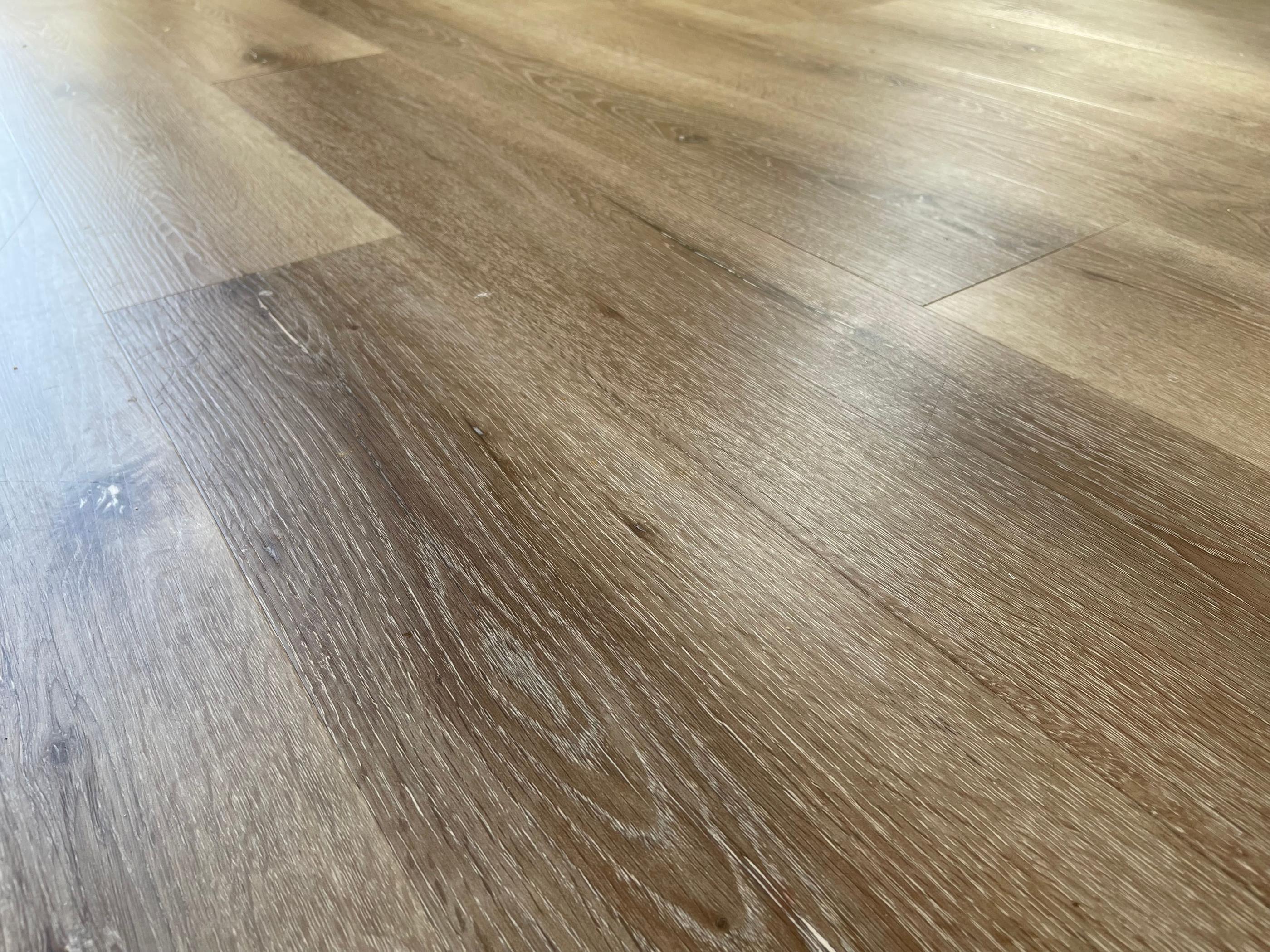
Keep stain removal simple.
Your floor’s manufacturer may have advice for different messes. However, you’ll find that good-quality vinyl flooring is so resilient that the fixes are pretty uncomplicated.
For example, spills and drips of nail polish or paint will often just peel off. Your worst household messes may only require using your normal vinyl cleanser at full strength. You can rub away many scuffs manually. So, don’t mix up various chemicals and DIY recipes before turning to the simplest advice.
Avoid waxing and steaming.
Steam is sanitizing on tile. Wax is wonderful on wood. Your new vinyl floor doesn’t need either of these treatments.
The finish is designed to be both sanitary and beautiful right out of the factory. Steam and wax can actually reduce those benefits over time, dulling the finish and compromising the layers.
Explore the best vinyl flooring options with a professional designer
In the end, you may decide that hardwood is still the way to go. Or perhaps, engineered hardwood has the look you want at the price you need. Luxury vinyl tile can be the answer for bathroom floors, while planks are more suited to kitchens.
See your options in person and get the details from pros who know. Some sources will try to sell you one, but The Designery offers them all. The choice is completely yours. Schedule a free consultation for access to everything you need, from design options to installation.
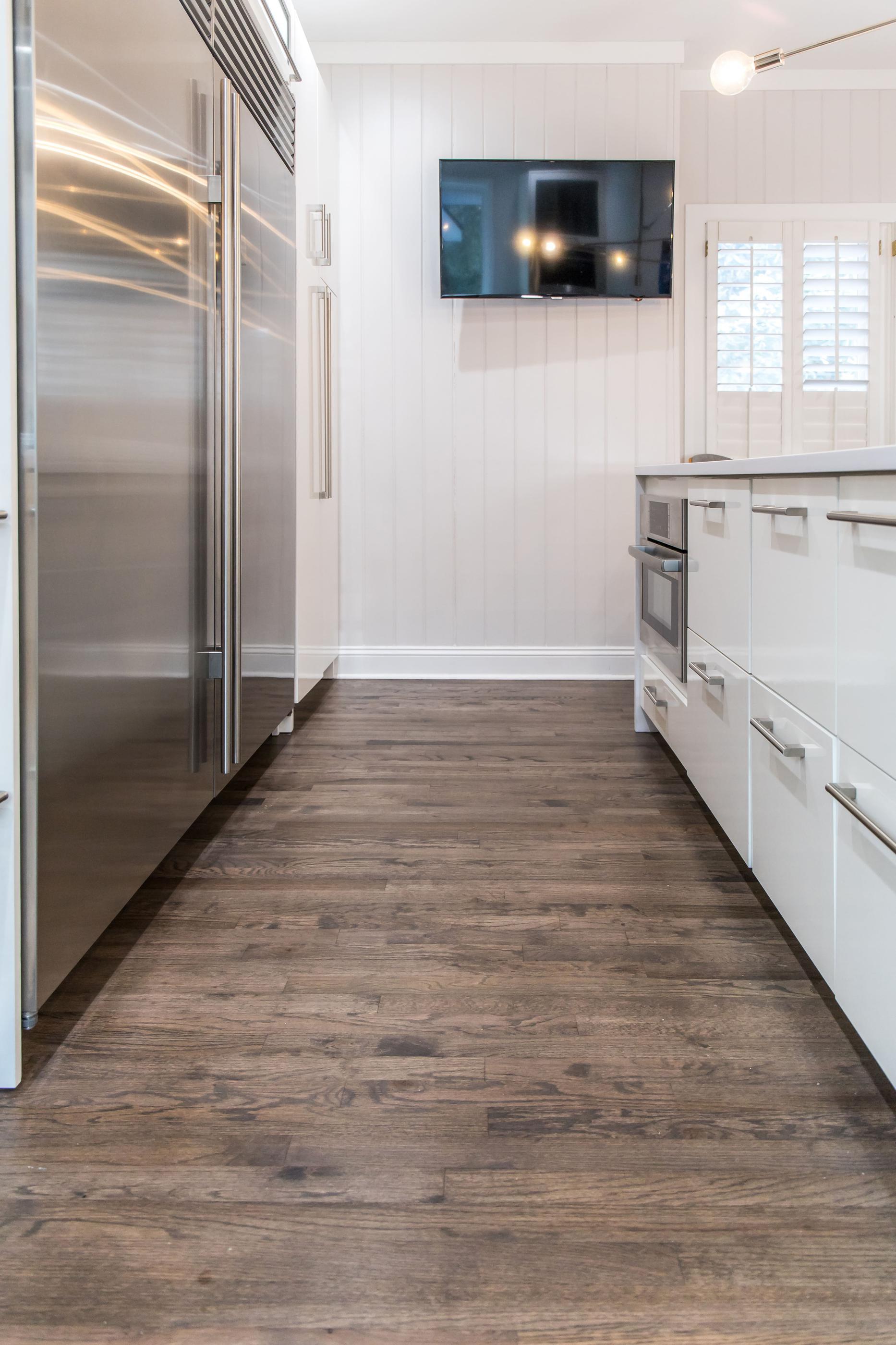
Vinyl flooring FAQ
Is it better to get vinyl or laminate flooring?
Laminate looks great and is more budget-friendly, but vinyl is longer-lasting. It offers better moisture and scratch resistance. What you save on laminate, vinyl makes up for in durability and longevity.
What type of vinyl flooring is best?
Luxury vinyl plank and tile are manufactured to hold up in moist environments like kitchens and baths. They’re also more durable and comfortable underfoot than standard vinyl.
What’s the downside to vinyl flooring?
Like most floors, dropping or dragging heavy or sharp objects can cause damage. The color you choose may fade with years of high UV exposure. Also, some homeowners prefer more sustainable, biodegradable options. In some of these cases, hardwood can be a better option.
Do I need underlayment for vinyl floors?
Underlayment can be necessary for quiet, smooth, comfortable floors, but you may not need it. High-quality vinyl flooring typically has padding built in that achieves all of these aims without an extra layer. Ultimately, the deciding factor will be the product you choose.

